#Ständehaus Rostock
Photo

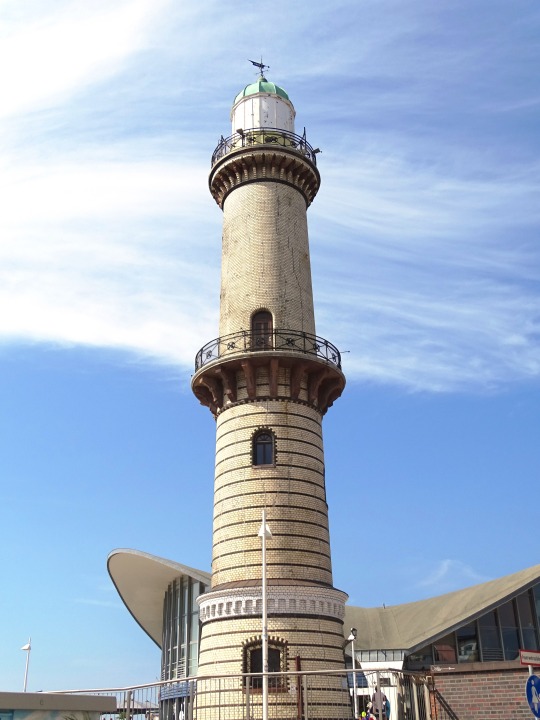
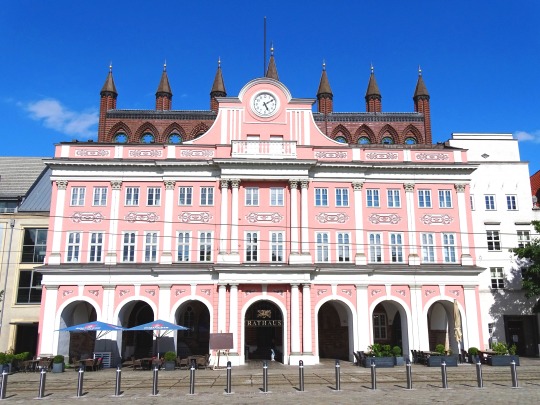


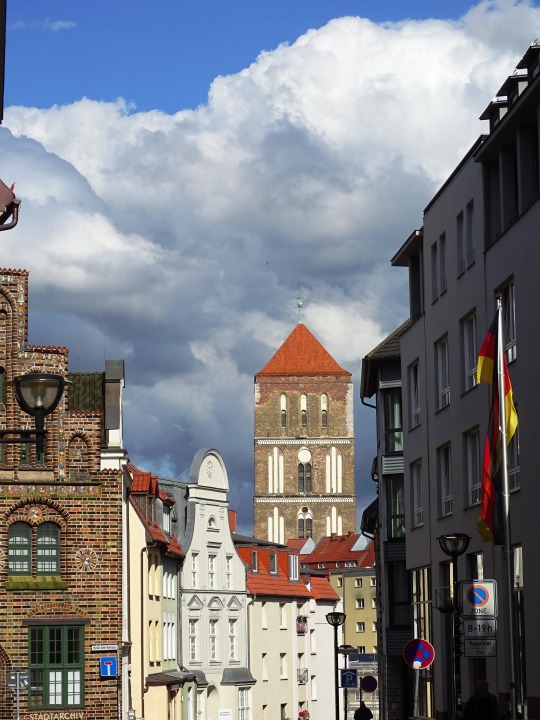


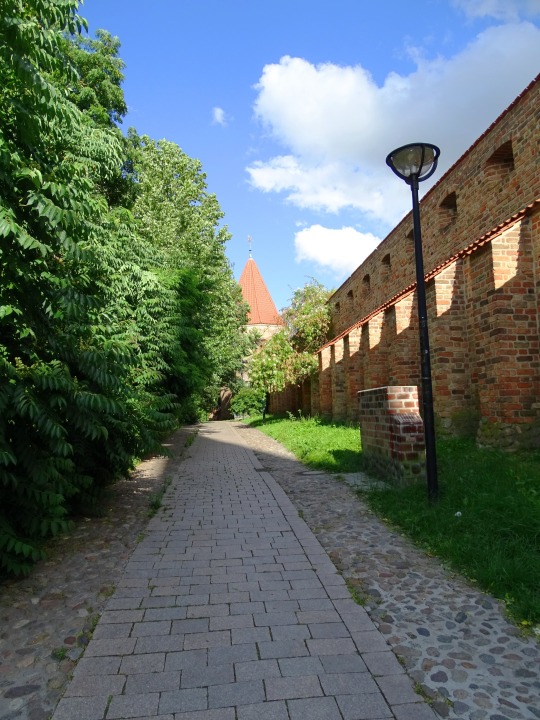

The Rostock Peace Treaty (German: Rostocker Landfrieden) was a treaty, or Landfriede, agreed on 13 June 1283 in Rostock to secure the peace on land and at sea, as well as the protection of taxes and other freedoms.
#Leuchtturm Warnemünde#city hall#Ständehaus Rostock#Rostock Peace Treaty#Rostocker Landfrieden#13 June 1283#740th anniversary#Germany history#Rostock#Warnemünde#Germany#Deutschland#Mecklenburg-Vorpommern#Mecklenburg–Western Pomerania#architecture#cityscape#summer 2020#original photography#vacation#travel#Europe#tourist attraction#landmark#town fortification
2 notes
·
View notes
Photo

Rostock, Germany
#Rostock#Germany#Steintor#Ständehaus#Ständehaus Rostock#Standehaus#Oberlandesgericht#Rosengarten#Rostocker Rosengarten#Deutschland#Hansestadt#Hanseatic City#Mecklenburg Vorpommern#Mecklenburg-Vorpommern#Mecklenburg#Vorpommern#2017#Europe
3 notes
·
View notes
Photo
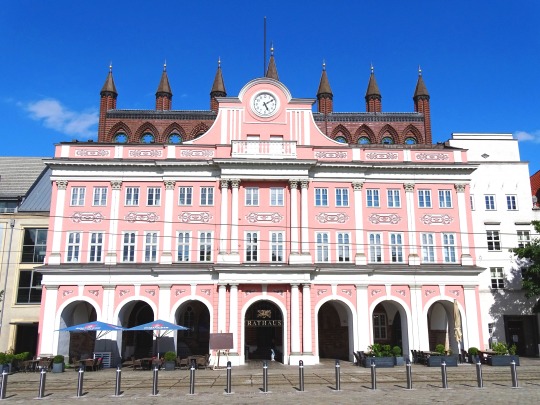
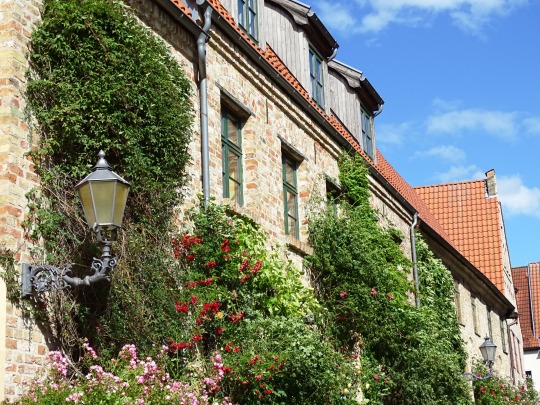
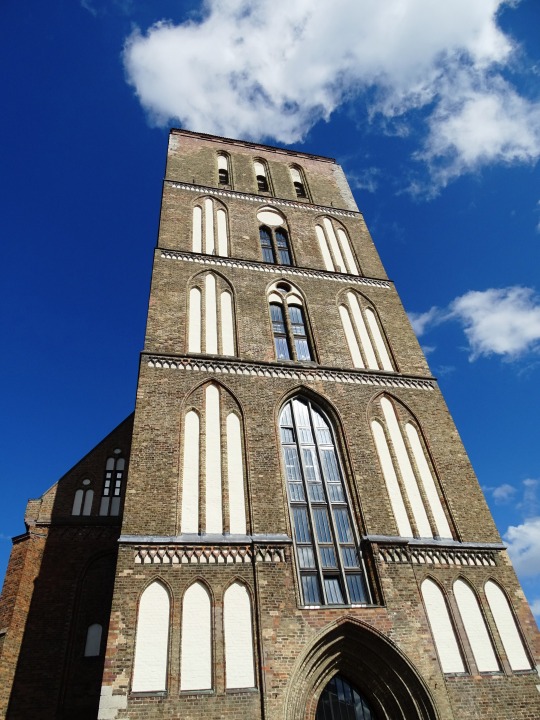

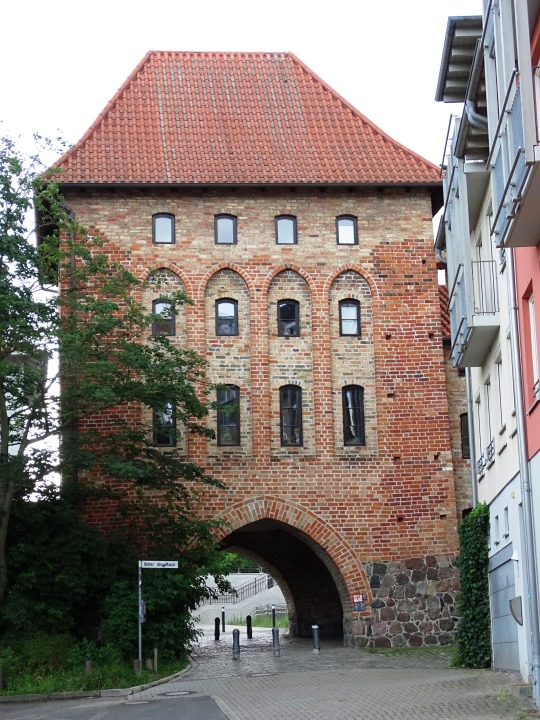


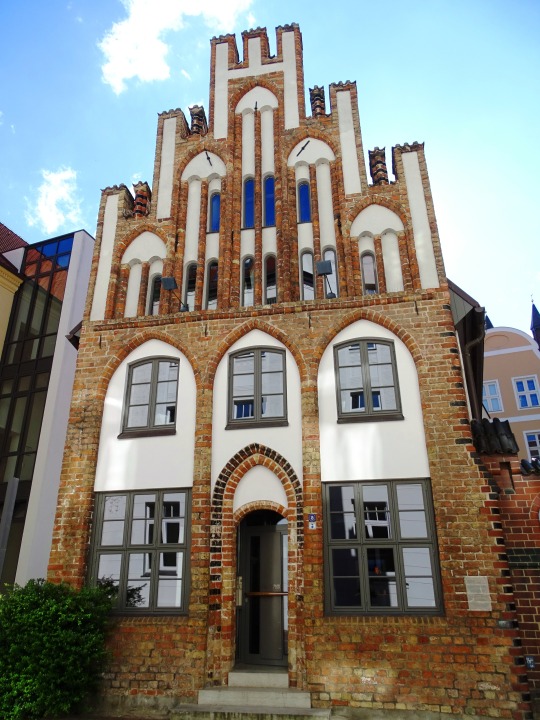


The Rostock fire of 1677 started on August 11, 1677.
#Rostocker Stadtbrand#Nikolaikirche#Kuhtor#Ständehaus Rostock#Stadtmauer#town fortification#Rostock fire of 1677#started#11 August 1677#anniversary#Germany#Rostock#Mecklenburg-Vorpommern#Deutschland#town hall#church#original photography#summer 2020#Europe#travel#vacation#cityscape#architecture#tourist attraction#landmark
0 notes
Photo

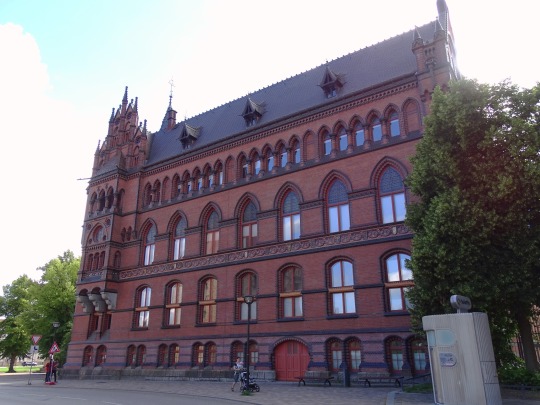

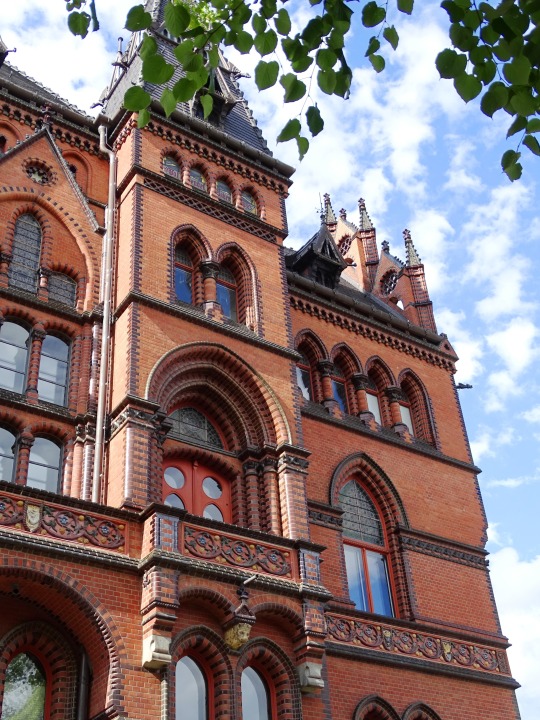
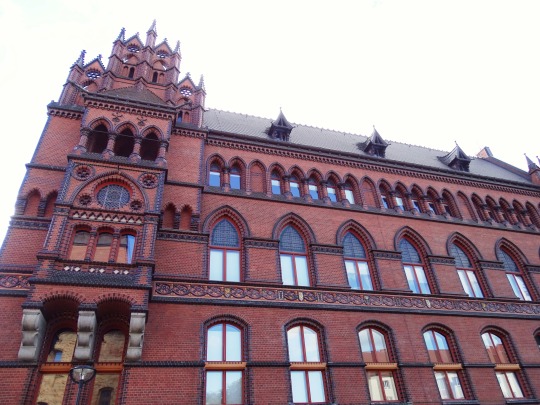
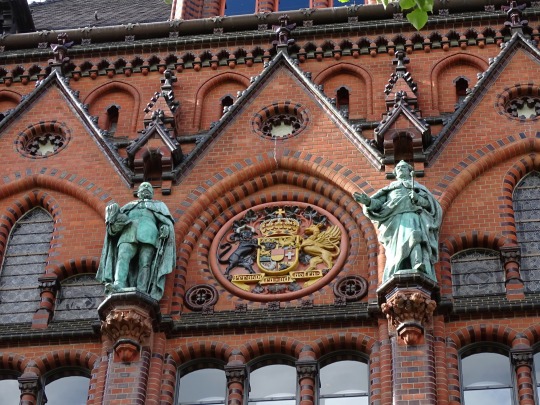
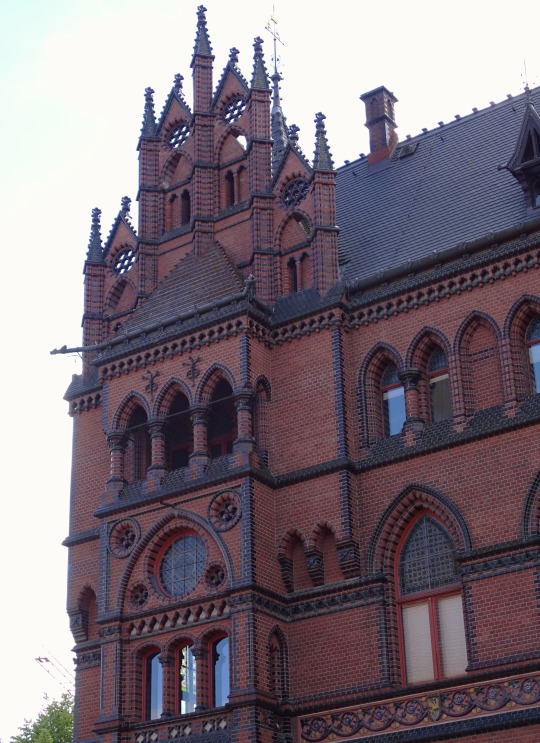
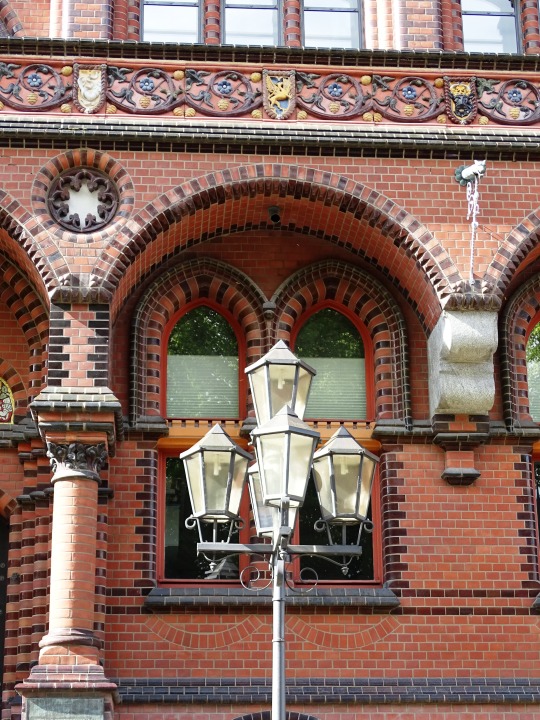
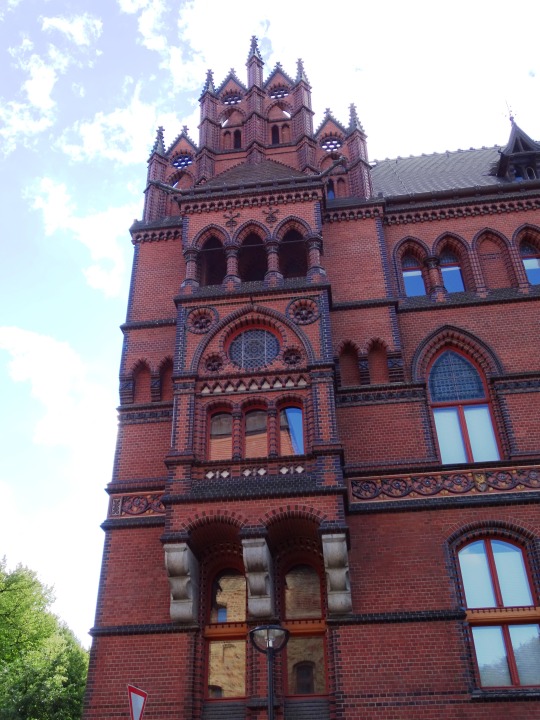
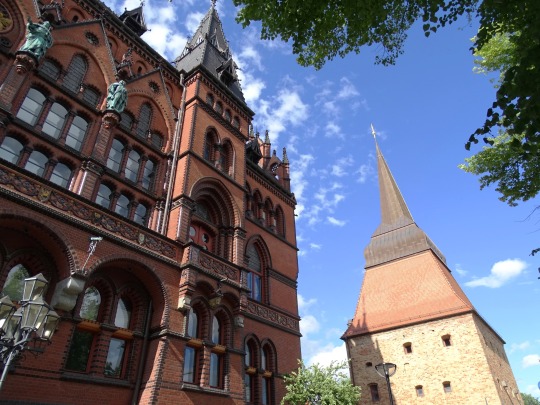
Ständehaus Rostock (No. 1)
This construction, representing the style of Historicism, was created in 1890 using plans made by Grand Ducal architect Möcken and now houses the Higher Regional Court.
The brick building was the parliament’s seat of the influential political estate representatives in Mecklenburg, to which the nobility and towns belonged.
Source
#Ständehaus Rostock#Oberlandesgericht Rostock#Wallstraße 3#Germany#Gotthilf Ludwig Möckel#Historicism#Hanseatic City of Rostock#Deutschland#Hansestadt Rostock#architecture#landmark#tourist attraction#vacation#summer 2020#cityscape#Steintor#fortification#city wall#statue#façade#exterior#street lamp#street light
11 notes
·
View notes
Photo


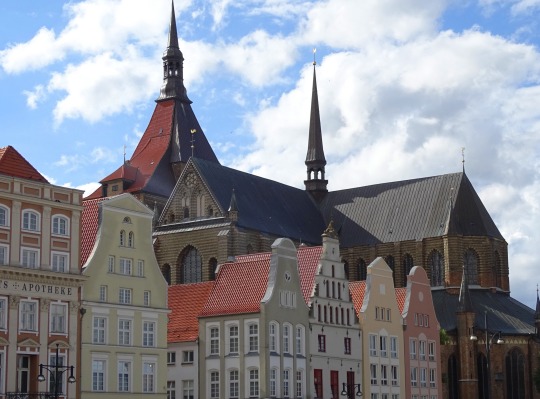
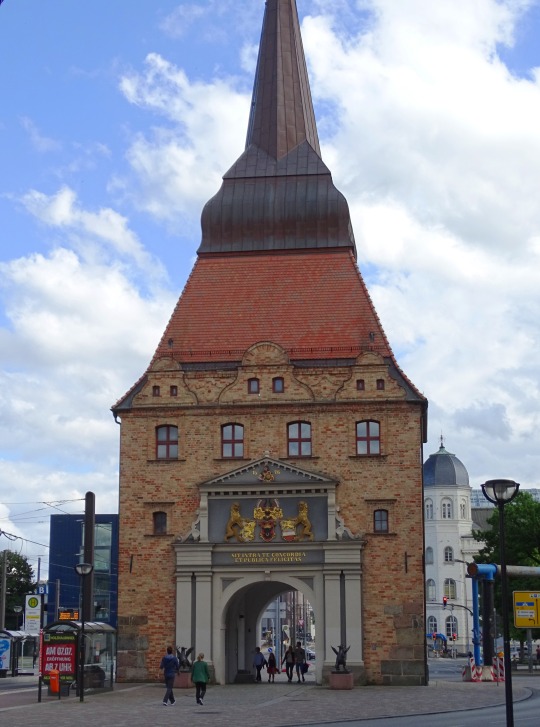


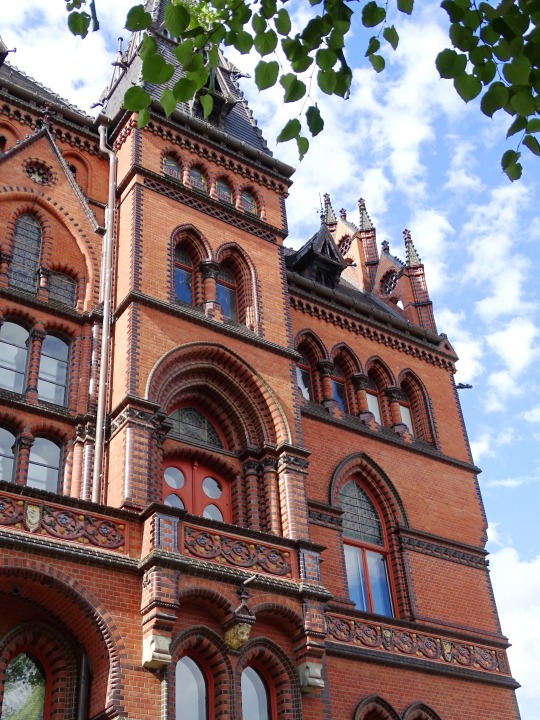



Clouds (No. 221)
Neuer Markt, Rostock (tree pics)
Steinstor, Rostock (tree pics)
Ständehaus Rostock (four pics)
#Rostock#Mecklenburg-Vorpommern#Germany#summer 2020#Mecklenburg-Western Pomerania#architecture#cityscape#blue sky#clouds#original photography#Marienkirche#Steinstor#Steinstrasse#façade#vacation#travel#tourist attraction#Ständehaus Rostock#Oberlandesgericht#Neuer Markt#exterior#street scene#landmark
5 notes
·
View notes
Photo

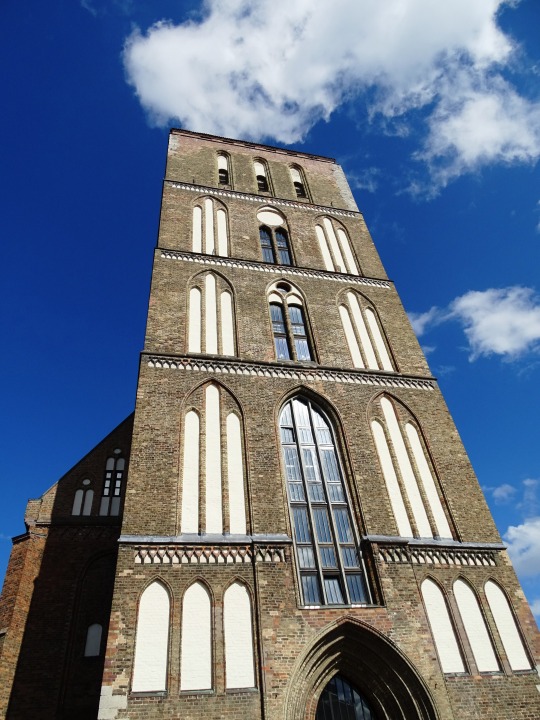
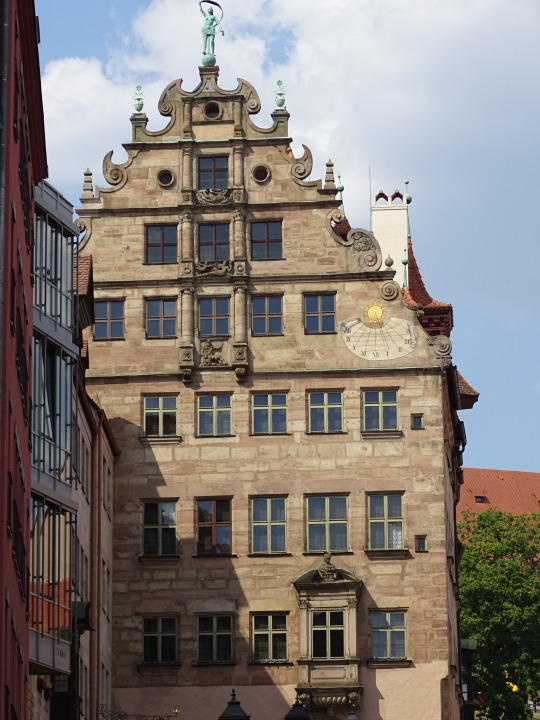
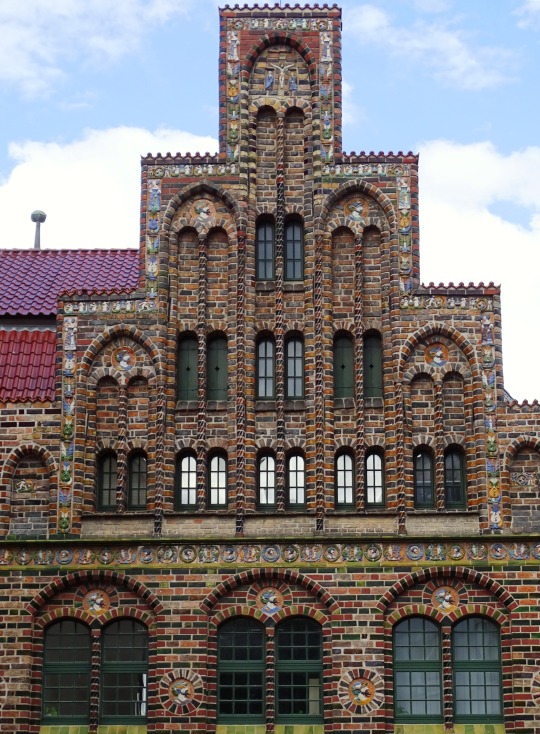
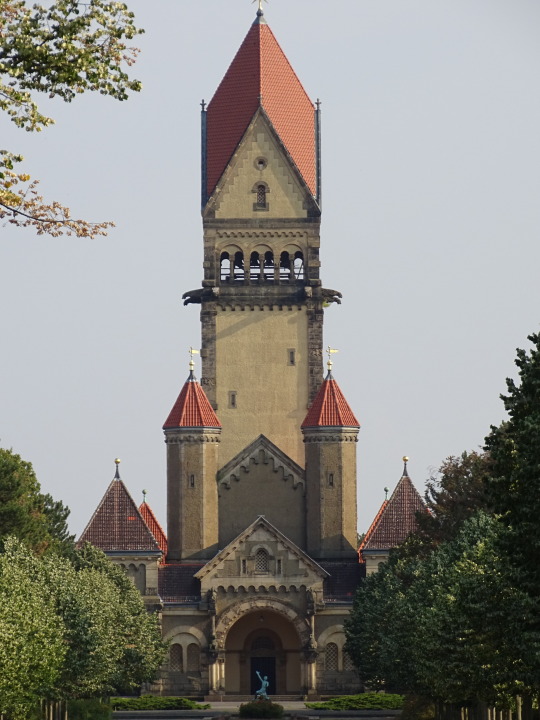
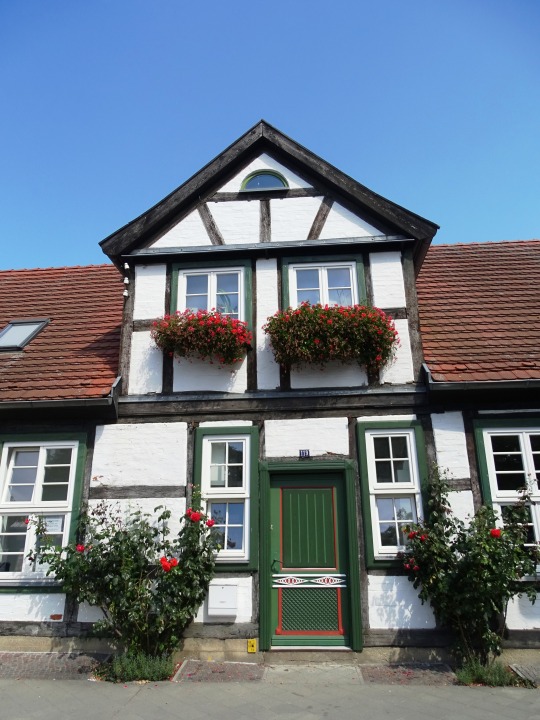



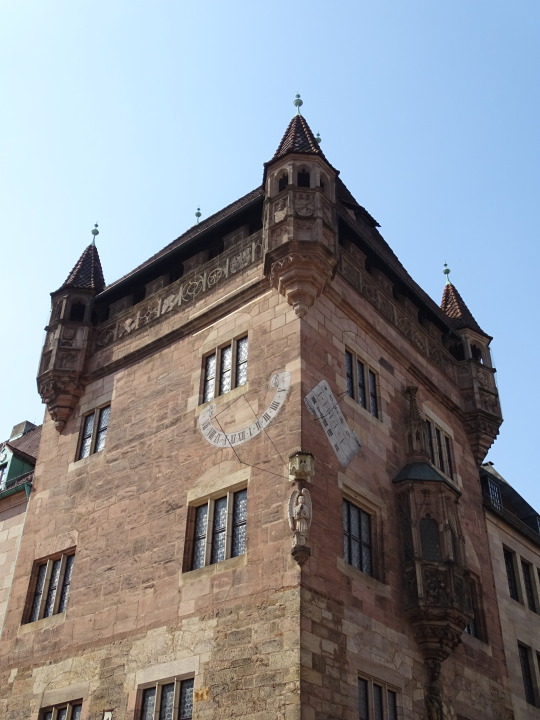
Architecture Day
Created in 2005 by the Union International des Architects (UIA), Architecture Day is a day to show appreciation for the work architects do and to celebrate some of the great global architectural works.
Architecture is incredibly important and architects have the potential to shape all of our lives through their hard work. In addition, architecture plays an essential role in planning for the future, sustaining population growth and tackling a number of social problems.
Events are held in different locations every year, bringing architects, engineers, planners, and developers together to showcase their work, discuss future projects, debate current issues and plan new business ventures. So if you work in the industry, why not go along and join in?
For those who do not work within the field of architecture, simply take a few moments out of your day to appreciate the architectural feats that you usually take for granted during your everyday life.
Source
#WorldArchitectureDay#World Architecture Day#first Monday in October#travel#summer 2020#5 October 2020#Rostock#City Hall#architecture#cityscape#original photography#Ständehaus Rostock#Nikolaikirche#Nuremberg#Nürnberg#Bavaria#Bayern#Kerkhoffhaus#Warnemünde#Saxony#Leipzig#Sachsen#Krematorium Leipzig#Fembohaus#Nassauer Haus#Mauthalle
4 notes
·
View notes
Photo


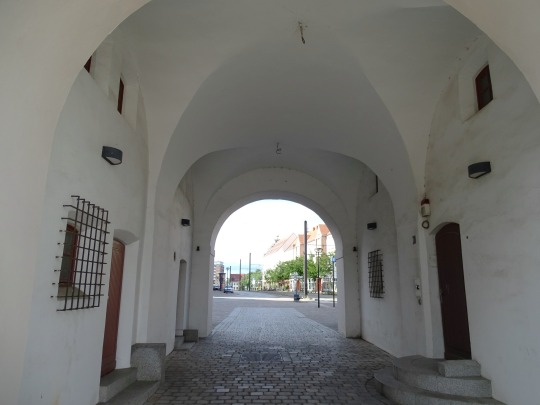
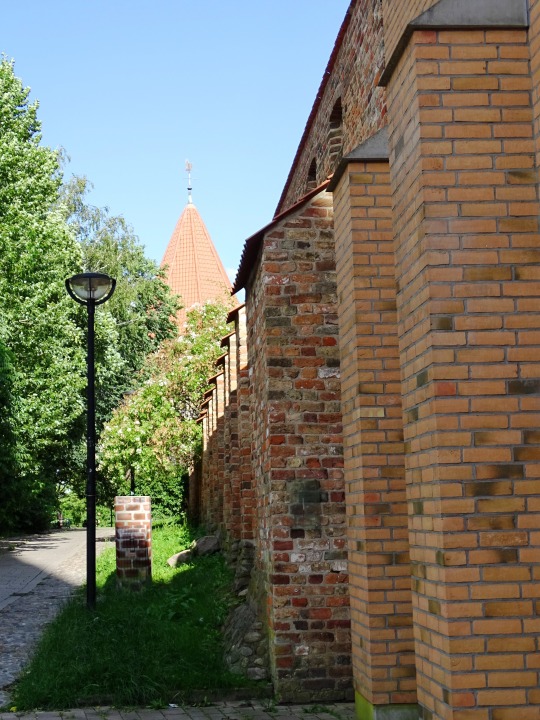
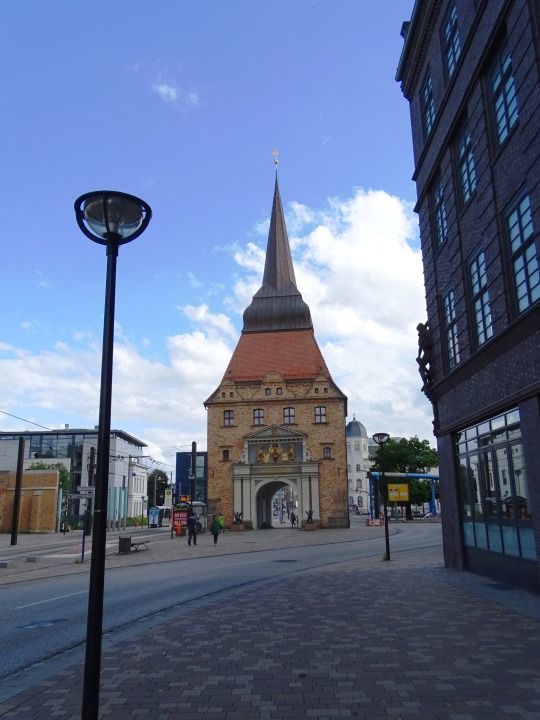



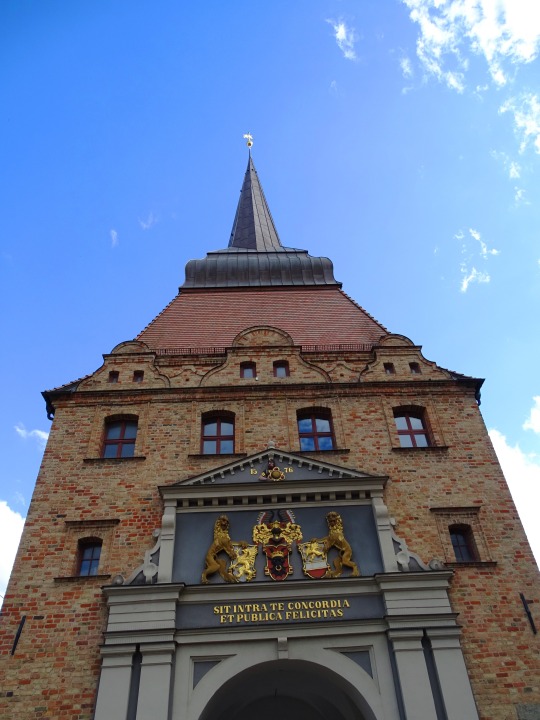

City Wall, Rostock (No. 1)
Large parts of the city’s fortifications, which encircled an area of around one square kilometre, are still standing today. South-west of the Gothic Kröpeliner Tor and up to the Schwaanschen Straße, the ramparts stretch out with built-in guard houses and a section of the wooden wall-walk.
From the stone gatehouse you can follow the wall to the oldest town gate in Mecklenburg, the Kuhtor (Cow Gate), which was first documented in 1262. A plaque in the wall by the Petrikirche church serves as a reminder of the town charter confirmation in 1218. The final remaining gatehouse is the Mönchentor (Monks’ Gate), which was redesigned in 1806 in the classical style.
Source
#city wall#city gate#Hanseatic City of Rostock#Hansestadt Rostock#travel#cityscape#architecture#summer 2020#Steintor#Steinstrasse#vacation#tourist attraction#National Historic Landmark#Ständehaus Rostock#Hinter der Mauer#Mecklenburg-Vorpommern#Mecklenburg-Western Pomerania#Germany#Deutschland#Lagebuschturm#tree#flora#street scene#Rostocker Stadtbefestigung#Porta lapidea#Renaissance#Northern Renaissance#exterior#façade
3 notes
·
View notes
Photo
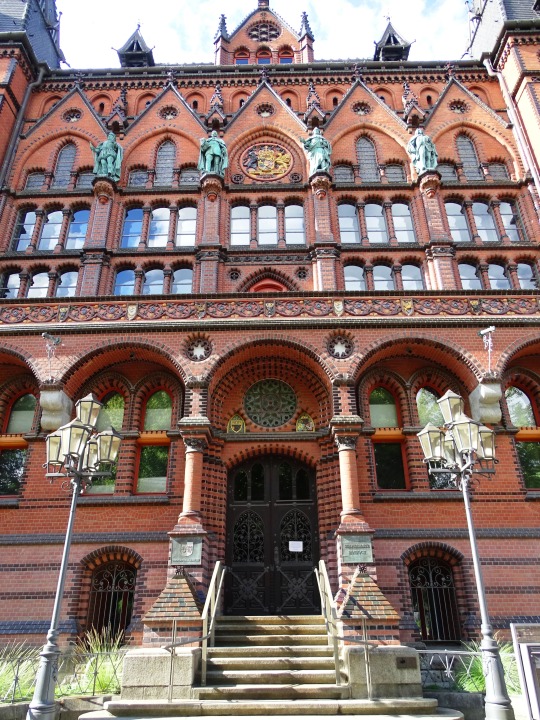

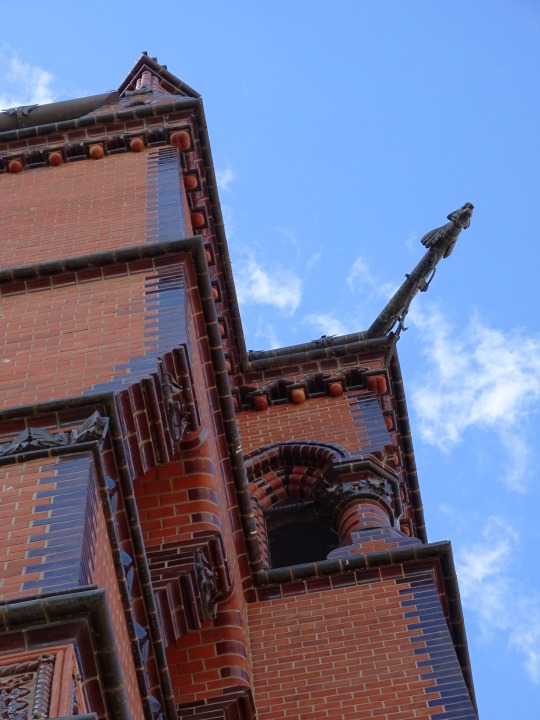
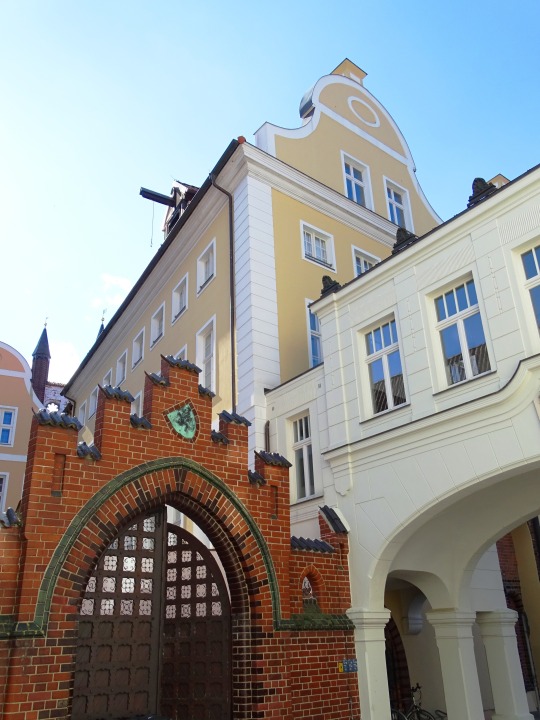
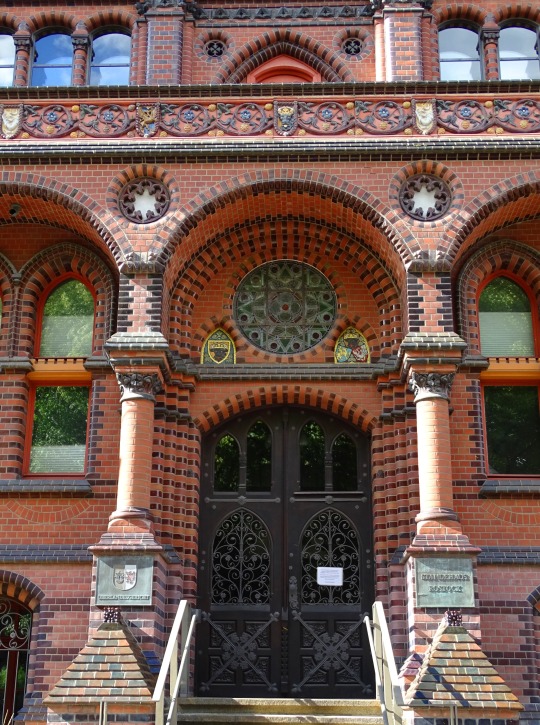
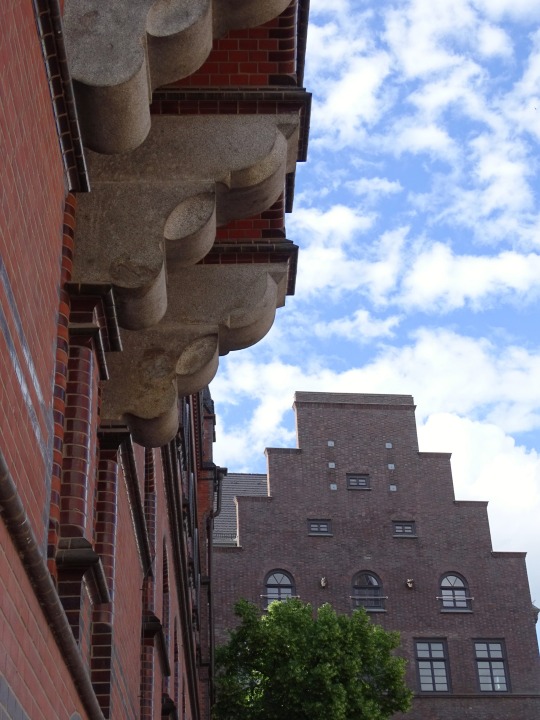
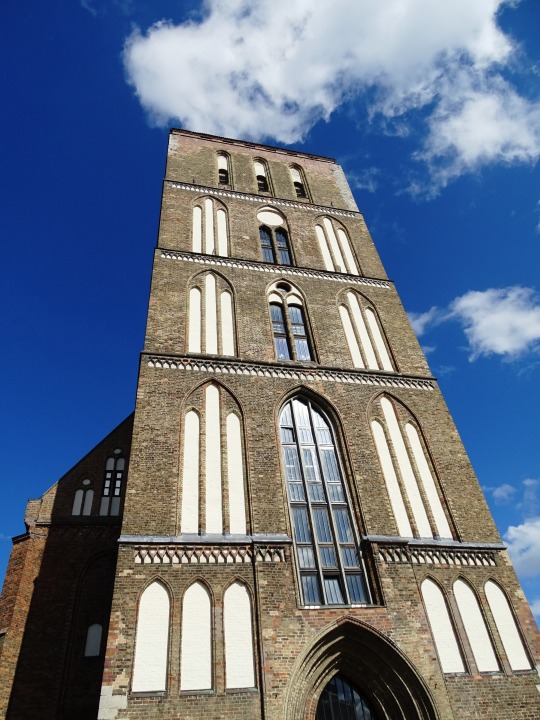



Ständehaus Rostock and other Buildings (No. 2)
In the 20th century, important aircraft manufacturing facilities were situated in the city, such as the Arado Flugzeugwerke in Warnemünde and the Heinkel Works with facilities at various places, including their secondary Heinkel-Süd facility in Schwechat, Austria, as the original Heinkel firm's Rostock facilities had been renamed Heinkel-Nord. The world's first airworthy jet plane prototype made its test flights at their facilities in what used to be named the Rostock-Marienehe [de] neighborhood (today's Rostock-Schmarl community, along the west bank of the Unterwarnow estuary).
In the early 1930s, the Nazi Party began to gain among Rostock's voters, many of whom had suffered economic hardship during the 1920s. In elections in the summer 1932, when the Nazis achieved 37.3 percent, their greatest national showing in a free election, they polled 40.3 percent in Rostock. A year later, after the Nazi seizure of power and the suppression of other political parties, the Rostock city council (Stadtrat) was composed entirely of Nazis. During Kristallnacht on 10 November 1938, the synagogue in Rostock's Augustenstrasse was destroyed by arson and dozens of Jews were beaten and imprisoned.
Feverish rearmament by the Nazi regime boosted Rostock's industrial importance in the late 1930s, and employment soared at the Heinkel and Arado factories, and at the Neptunwerft shipyard. The city's population grew from 100,000 in 1935 to 121,192 in 1939.
During World War II, Rostock was subjected to repeated and increasingly heavy bombing attacks, especially by the British Royal Air Force. Targets included the Heinkel and Arado plants and the shipyard, but churches and other historic structures in the city centre were also heavily damaged, among them the 14th-century Nikolaikirche (St Nicholas Church) and Jakobikirche (St Jacob's Church). The ruins of the latter were torn down in 1960.
The city was eventually captured by the Soviet 2nd Belorussian Front on 2 May 1945 during the Stettin-Rostock offensive operation.
After the war, Rostock – now in the German Democratic Republic – became East Germany's largest seaport. The state expanded the national shipyards in the district of Warnemünde. The city's population, boosted in part by resettled ethnic German refugees who had been expelled from territories in the east, increased in the GDR years to a peak of 260,000. Following the reunification of Germany in 1990, Rostock lost its privileged position as the No. 1 port of the GDR, and the city's population declined to about 200,000. However, after 2006, the population increased again. Today, Rostock and Warnemünde are significant tourist destinations on the Baltic Sea.
Since the late 20th century, migrants have come to Germany from Turkey and Africa seeking work. In response to high rates of joblessness and increased levels of crime, some Germans took part in the Rostock-Lichtenhagen riots which occurred from 22 to 24 August 1992 in protest.
Source: Wikipedia
#Kerkhoffhaus#Ständehaus Rostock#city hall#town hall#Rathaus#Stadthaus#Hanseatic City of Rostock#Hansestadt Rostock#Germany#travel#summer 2020#architecture#original photography#Deutschland#landmark#Mecklenburg-Vorpommern#Mecklenburg-Western Pomerania#Walldienerhaus#Nikolaikirche#Steintor#façade#cityscape
4 notes
·
View notes